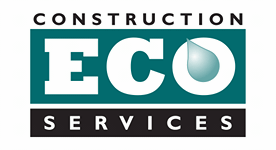Maximizing Residential Lot Yield: LID Approach with Lessons Learned
While a lot of the attention for Low Impact Development (LID) projects in Texas can be found in Central Texas or the Gulf Coast, one of the best examples of a LID project can be found outside of the City of Houston in Fort Bend County. The single-family residential project, known as Camellia, is one of the best examples of how an LID approach can benefit the community, the future residents, and the developer of the project.
Located approximately twenty miles from downtown Houston and close to the town of Richmond, Texas, the Camellia development consists of ninety acres. The original intent of the developer, Victorian Gardens, Ltd., was to mirror many of their other successful developments where an amenity lake in a “canal style” configuration was the primary feature. This design consisted of digging a large basin to be used for the canals and also for detention of the 100-year storm event of approximately twelve (12) inches of rain in a twenty-four (24) hour period. The result of this design was a development that would yield 224 residential lots at an estimated construction cost of $34,700 per lot, for an estimated total construction cost of $7,770,500.
The engineer for the development believed that there could be benefits to the development and the developer by looking at the project through the lens of LID. The developer was willing to listen, but wanted to make sure that the delivered lots did not require any modification to the home building plan. This developer primarily sells their finished lots to production home builders. If there were modifications to the building approach, then the developer would have a harder time selling their lots to these home builders. After getting the blessing of the developer to determine a LID solution to compare to the conventional approach, the engineer went to work on the plan.
The LID concept developed by the engineer consisted of placing bioretention basins that use high flow biofiltration inside the medians of a public roadway. The roadway would be designed by an inverted boulevard section so that the storm water run-off would come off the lots, using a traditional lot grade, enter the paved street and then continue to drain toward the middle of the boulevard. This resulted in a wider right of way section than the typical boulevard but placed a green, parklike area, in front of nearly every single residential lot.
Since the bioretention basins would be placed in the public right-of-way, the engineer had to work to obtain the approval of the concept from the engineers of Fort Bend County. After spending some time educating the agency engineers, the concept was conditionally approved; however, the engineer needed to prove that the LID features would detain for the same 100-year storm event as the conventional approach. Using the LID Criteria established by the neighboring jurisdiction, Harris County, the engineer prepared a detailed drainage analysis of the bioretention design that indicated the 100-year storm ponding elevations did not exceed the anticipated high banks of the rain gardens throughout the development. With this assurance from the engineer, Fort Bend County was comfortable with the approach.
Once the engineer received the County assurances, the presentation of the LID design was made to the developer. The land plan presented for the same ninety acres resulted in a lot yield of 323 residential lots. This is ninety-nine (99) more lots when compared to the conventional approach, which represents a forty-four percent (44%) increase in lot yield. The engineer immediately had the attention of the developer. Further, the representative for the home builder was immediately enamored with the immense green space throughout the community. Many complaints that the home-builder heard in other communities was the lack of green areas close to the individual houses. This approach completely removed that concern. After little discussion, the developer chose to move forward with the LID concept.
Fast forward several months and the infrastructure residential development went out to bid for construction. This was the biggest test of the LID approach. The engineer had made assurances that the construction costs would be comparable to, if not less than the estimated costs for the conventional plan. When the construction bids came in, the total costs of infrastructure construction were $6,833,400. That cost was $937,100 LESS than the conventional approach. Given the increase in the lot yield to the developer, the average lot cost for the LID approach was $21,100 which is a cost savings of $13,600 per lot. Understandably, the developer was pleased with the results.
Construction of the bioretention basins began in the winter of 2014. A traditional bioretention design would require the entire footprint of the basin as the filtration bed, but that approach would cut into the cost savings and create a long-term maintenance burden for the developer. The next generation of bioretention, high flow biofiltration, allowed the engineer to use a smaller footprint, reduce contractor error during installation, and keep the long-term maintenance costs low. Most of the bioretention basins used two High Performance Modular Biofiltration Systems (HPBMS), also known as FocalPoint. The flow rate of the system is 100” in/hr, which allows the engineer to model it as a restrictor pipe, not unlike a staged outfall for a detention pond. The biofiltration system restricts the flow of stormwater, allowing water to be stored aboveground in the bioretention basin. The engineer can leverage the available surface storage in the bioretention basin to scale down the system, reducing construction costs. This extends the time of concentration, decreases peak flow, and mimics pre-development hydrology. Another added value of this system is the water quality benefit that reduces pollutant loads in the receiving streams. Long term third party field monitoring under the TAPE Protocol demonstrates that it reduces Total Suspended Solids by 85%, Total Phosphorus by 52%, and Total Nitrogen by 60%.
The system is as effective at pollutant removal as traditional engineered medias, but requires 1/20th of the footprint needed for traditional bioretention to match the flow velocity. The smaller footprint biofiltration systems cost more per square foot than the traditional bioretention approach, but its greatly reduced size meant significant savings, roughly 50%, for the water quality treatment element of the project. The smaller footprint also allowed the vast majority of the bioretention basin to be maintained using traditional landscaping processes. Because of the efficiency of the high flow rate media and the resulting small footprint of the biofiltration system the excavation required to get the job done was greatly reduced. Once the excavation was complete, laborers hand placed the modular, box-style underdrain system that would be connected to the downstream storm sewer system. Once in place, a small excavator carefully backfilled 3/8” pea gravel bridging stone, 12” around the sides and 6” above the underdrain, to separate the engineered soils from the underdrain. 18” of the engineered soil was then placed on top of the pea gravel, followed by a 3” layer of shredded hardwood mulch with no fines.
After 10 years of constructing LID projects in Texas, system provider Construction EcoServices (CES) found that single-family developments are the most challenging. The home lots are not all developed at once, so the threat of sediment erosion exists until all the homes are constructed. There was no option to have stormwater bypass the bioretention basins during home construction, once the drainage system and roads were constructed the bioretention basins and biofiltration systems needed to be operational. The first step in preventing contamination of the biofiltration system was encasing it with a protective geotextile cover and surrounding it with silt fence. This process created a permeable filter for the water to run through and prevented silt and sediment from penetrating. The second step consisted of establishing vegetation in the bioretention basins to prevent erosion from washing away the slopes.
The Erosion Control and Slope Stabilization Department of CES relied on its experience to find a quick, cost-effective method for vegetation establishment. Instead of using a low-end hydromulch, a high performance-flexible growth medium, also known as Flexterra, was applied to the slopes of the bioretention basin. It binds directly to soil and has a faster application time than rolled blankets. The faster vegetation establishment and greater biomass production made it a good choice to prevent slope erosion. Even though CES and the engineer were prepared for the run-off situation, there were still rills that formed on the slopes. Had careful considerations in design and construction, such as placement of block sod immediately on the edge of pavement, not been taken, the situation would have escalated and been much worse. Effective communication between all parties involved in the design, construction, and maintenance of LID projects is an invaluable tool for success.
The maintenance plan for the bioretention basins was divided into two components, storage and filtration. The storage area consisted of the landscape surrounding the biofiltration systems. This area was treated like a normal landscape that requires general gardening skills such as mowing, pruning, weeding, and mulching. The filtration component relies on a trained eye to differentiate between topsoil and engineered soil. Twice a year, the mulch layer on the biofiltration system is removed and replaced with fresh mulch. The mulch layer screens out sediment silt that can potentially clog the engineered media, making it necessary to remove and replace the mulch bi-annually. There is a common misconception that when the mulch layer breaks down or gets clogged, adding more solves the problem. This only further exacerbates the clogging and slows down the infiltration rate of the engineered media.
The benefit of using a LID design is that the stormwater systems are clearly visible, rather than an underground system that is easy to forget about. Even with the best design and construction team working on a LID project, the ultimate success depends on the quality of maintenance. If a hydrodynamic separator becomes clogged or needs maintenance, no one finds out until the manhole cover is removed and the unit is inspected. With a LID design, the visible landscape makes it easier for the owner to determine when it needs maintenance. A Stormwater Quality Management Plan (SWQMP) is designed to address the treatment of stormwater runoff after construction is complete. A maintenance plan is highly encouraged for any type of LID development, no matter how small or large. Having learned this the hard way through this project, the engineer (Odyssey Engineering Group) and landscape architect (Clark Condon, Inc.) are working together to create a comprehensive plan to ensure proper maintenance for the life of the project.
The robust growth projected for the Houston-Galveston region is forecasted to lead to the addition of approximately 500 square miles of developed area, including an estimated 6 million parking spaces, 780 million square feet of non-residential uses, and 3.5 billion square feet of residential use. This impervious surface area has the potential to increase stormwater runoff volumes and associated pollutant loadings into local waterways, Galveston Bay, and the Gulf of Mexico. LID provides an opportunity to explore a sustainable way to accommodate future development and manage stormwater.
Camellia represents one of many communities that the home builder has around the Fort Bend and Harris Counties. Home sales for Camellia are out pacing all other communities. The biggest reason many of the home buyers are giving is the integrated green space and the increase in landscaping when compared to other, similar, communities. LID is a highly-effective, economically advantageous approach to controlling stormwater. There is growing interest in LID in the Houston-Galveston region, though there are still barriers to its broad acceptance, such as codes, lack of awareness, and misperceptions. Fortunately, incentives, new development policies, and education tools exist to encourage the use of LID in this region.
One of the best ways to encourage LID is to remove the regulatory barriers that increase developers risk and costs. Standards and guidelines should specifically define the purpose, function, and specifications of LID while leaving room for flexibility to creatively apply these systems where possible. Design standards and development codes can be written and or modified to ensure LID may be applicable on all land types and land uses.










